

How to Create a Revenue Schedule in Salesforce
Revenue forecasting is crucial for any business, as it helps ensure that deals closed by the sales department result in…

Last updated on Wednesday, February 7, 2024
For software as a service (SaaS) companies, understanding and utilizing customer usage data is essential. Salesforce, with its comprehensive CRM capabilities is the preferred platform to leverage this data. In this article, we’ll explore five essential usage-based software strategies that can transform how businesses interact with their customers, and why they should be done in Salesforce.
Understanding Future Needs: When moving from a traditional SaaS model to usage, the ability to predict future customer needs is crucial. By integrating time-series data for usage forecasting into Salesforce, companies can not only track current usage but also project future trends. This data becomes invaluable when estimating opportunity amounts, ensuring that predictions are not just guesswork but are data-driven.
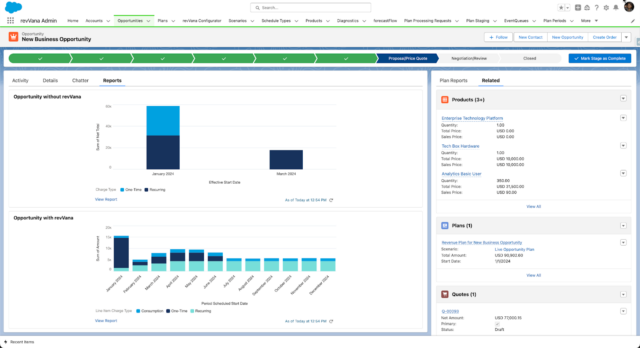
Salesforce as a Predictive Tool: Salesforce excels in analytics. By feeding usage data into its system, businesses can utilize Salesforce to forecast future customer requirements, allowing them to make informed decisions about sales strategies and customer engagement. The important thing to understand is that usage-based products must be treated differently, it’s not subscription or hardware revenue and won’t be a flat quantity that’s simple to forecast.
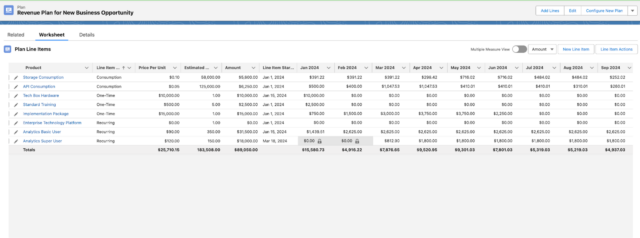
Implementation: To achieve this, Salesforce’s custom fields and objects can be tailored to capture and analyze time series data. This can be achieved by separating your revenue into individual categories (Recurring, one-time, usage-based revenue, etc.). Predictive analytics tools within Salesforce can then be used to project usage trends, which are essential in customizing opportunity objects to include projected usage data. You’re also able to utilize products like revVana to create a plan, and stretch it over a specific time horizon.
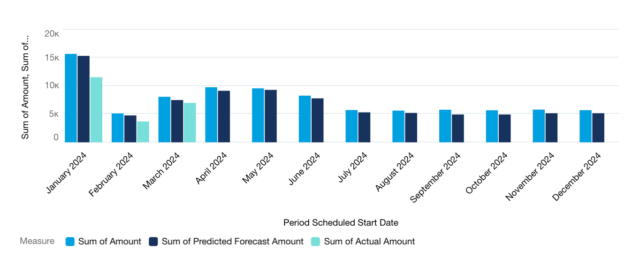
Tracking Engagement: Understanding how customers interact with your software is key as it allows you to be more specific with identifying trends and usage patterns. If you can track feature usage, you can understand what use cases are being accomplished by users. You can then use that to identify power users & companies that can help you from a marketing standpoint. It is instrumental in identifying adoption or churn (i.e. You sell 1000 units, yet your client has only used 250 near the end of their contract. You can assume they probably won’t renew or they will renew at a lower price point.)
Why Salesforce Matters Here: Salesforce can store logs of user access, transaction volumes, and feature usage, aggregated by account, product, and other categories through CPQ’s usage summaries. This data is crucial for identifying trends and usage patterns. This data helps predict when customers might need upgrades or hit pricing tiers, offering actionable insights for Sales and Customer Success teams. It’s also pivotal in managing renewals and upsell opportunities.
Practical Steps: Utilizing CPQ for usage summaries and creating custom objects in Salesforce allows for a robust tracking system. Developing dashboards and reports to visualize these metrics makes the data actionable.
Measuring Sales Performance: It’s essential to compare what was forecasted versus what was actually achieved against set targets. Salesforce can track usage/revenue schedules, and monthly or quarterly targets, providing a clear picture of performance. Additionally, there are tools on the Salesforce App Exchange to better forecast revenue, tools such as revVana’s revenue forecasting platform.
Salesforce’s Analytical Edge: This comparison helps businesses understand where their sales strategies are succeeding and where they need improvement. It aligns sales efforts with customer usage and revenue potential. You can also use it to set up sales targets and understand where accounts are over or under performing.
Implementation Insight: Salesforce’s reporting and dashboard functionalities can be leveraged to make these comparisons. Custom fields and objects can provide detailed tracking, and automated reports can offer regular insights into account health.
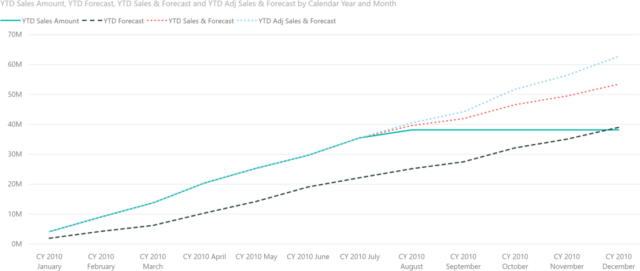
Flexible Pricing Models: In today’s market, flexible pricing is a must. Salesforce can help implement pricing schedules that reflect customer usage, making pricing transparent and adaptable.
Why Use Salesforce: Integrating dynamic pricing directly into Salesforce streamlines the sales process, making it efficient and transparent for both sales teams and customers. This gives reps account insight that only provisioning or accounting teams may have. Invoice information is important to understand overages and what sales teams need to bill.
How to Execute: This involves integrating a dynamic pricing engine and customizing Salesforce objects to reflect these pricing tiers, making the process seamless and integrated. This can be done through CPQ or Billing.
Managing Customer Contracts: Tracking overages and managing renewals and amendments are crucial for customer satisfaction. As we mentioned, Salesforce can automate these processes, making them proactive rather than reactive.
The Advantage of Salesforce: This automation improves customer experience during contract changes and helps sales teams identify and act upon overage situations promptly. Additionally, the real-time visibility of current usage is essential in identifying adoption or churn.
Implementation Strategy: Implementing custom alerts and triggers in Salesforce for overage tracking, and automating renewal and amendment workflows, are key steps. Dashboards can monitor these situations, keeping everything under control.
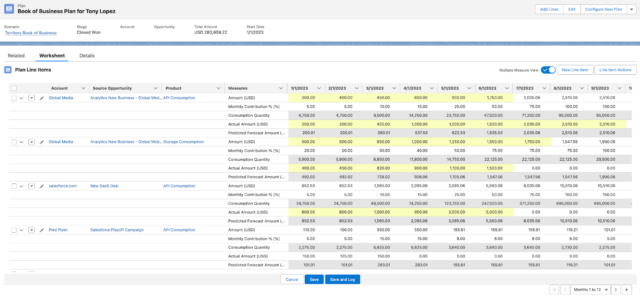
Salesforce, as a robust CRM tool, offers extensive capabilities for managing customer relationships and analyzing usage data for software companies. However, when it comes to specialized needs like revenue forecasting, businesses may find themselves seeking additional tools that complement and enhance Salesforce’s native functionalities. This is where solutions like revVana come into the picture, seamlessly integrating with Salesforce to offer a more comprehensive approach. Reach out to revVana today and discover how our solution can work with your Salesforce system, allowing your business to make smarter, data-driven decisions.